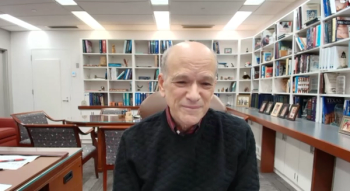
- Psychiatric Times Vol 26 No 6
- Volume 26
- Issue 6
Forest Reserves $170 Million for Settlement; FDA Approves Lexapro for Teens
Forest Laboratories recently set aside $170 million in anticipation of eventually settling a federal government complaint about the company’s marketing and promotional practices.
Forest Laboratories recently set aside $170 million in anticipation of eventually settling a federal government complaint about the company’s marketing and promotional practices.
In a press statement (
The DOJ’s 34-page civil complaint charged that for more than half a decade, Forest illegally marketed citalopram and escitalopram for off-label use in pediatric patients, used “illegal” inducements to physicians to get them to prescribe the drugs, suppressed research, and caused false claims to be submitted to federal health care programs. (See Psychiatric Times, April 2009, or
Discussions ongoing
Frank Perier Jr, Forest’s chief financial officer and senior vice president–finance, told stock analysts in an April 21 conference call that the discussions with the DOJ have not yet concluded. He commented that “there can be no assurance as to when they will conclude or whether they will lead to a negotiated resolution for the amount of any settlement that may be reached.”1
Until the investigation is resolved, he added, “there can be no assurance that the amount to be paid in a negotiated settlement will be at the level reserved by the company or that a larger material amount will not be required. The company continues to cooperate with these investigations.”
FDA approves Lexapro for pediatric use
Amid the DOJ-Forest discussions about Forest’s alleged promotion of citalopram and escitalopram for children and adolescents, the FDA in March approved Forest’s supplemental New Drug Application for the use of escitalopram tablets and solution in the acute and maintenance treatment of major depressive disorder (MDD) in adolescents aged 12 to 17 years.
Lawrence Olanoff, MD, PhD, Forest’s president and chief operating officer, told stock analysts during the conference call that this program included clinical studies in a patient population in whom it has been difficult to demonstrate positive results in the past. The approval of escitalopram for the treatment of adolescent MDD was supported by 2 placebo-controlled studies, according to Forest’s press statement (
Emslie and colleagues2 presented results of an 8-week flexible-dose, placebo-controlled phase 3 study at the 2008 annual meeting of the American Psychiatric Association. Adolescents aged 12 to 17 years with MDD were randomly assigned to outpatient treatment with escitalopram 10 to 20 mg/d (n = 155) or placebo (n = 157). A total of 259 patients (83%) completed the trial (126 received escitalopram and 133 received placebo).
The primary end point was the change from baseline to week 8 on the Children’s Depression Rating Scale–Revised (CDRS-R). The mean baseline CDRS-R score was 57.6 in the escitalopram group and 56.0 in the placebo group. The score decreased by 22.1 points in escitalopram recipients and by 18.8 points in placebo recipients (P = .022). No patient in either group attempted suicide, although 6 patients in each group had an adverse event that investigators considered to be suggestive of self-harm.
In another 8-week, flexible-dose, placebo-controlled study, outpatients aged 7 to 17 years treated with racemic citalopram 20 to 40 mg/d (mean dose, 24 mg/d) showed a statistically significant greater mean improvement from baseline on the CDRS-R than patients treated with placebo.3 The intent-to-treat population consisted of 89 patients (45 children and 44 adolescents) assigned to citalopram and 85 patients (38 children and 47 adolescents) assigned to placebo. Eighteen patients from each group discontinued double-blind treatment prematurely.
Citalopram treatment significantly improved depressive symptoms as early as week 1 of treatment. At end point, more citalopram-treated patients (36%) met the prospectively defined criterion for response (CDRS-R score of 28 or less) than placebo recipients (24%).
“The positive results for this trial largely came from the adolescent subgroup,” according to Forest’s press statement. “The FDA’s determination of the efficacy of Lexapro in the acute treatment of MDD in adolescents was established, in part, on the basis of extrapolation from this study.” Two other flexible-dose, placebo-controlled MDD studies that involved escitalopram or citalopram did not demonstrate efficacy.
In a European, multicenter, double-blind study, 244 inpatients and outpatients (aged 13 to 18 years) who had MDD were randomized to treatment with citalopram (n = 124) or placebo (n = 120).4 One-third of the patients in both groups discontinued from the study. No significant differences in improvement of scores from baseline to week 12 between citalopram and placebo were found, as measured by the Schedule for Affective Disorders and Schizophrenia for School-Age Children–Present Episode Version (K-SADS-P) and the Montgomery-sberg Depression Rating Scale. This trial allowed use of other psychoactive agents, the use of therapy, and also the inclusion of patients at high risk for suicide.
In 2006, Wagner and coworkers5 reported on their 8-week study of outpatients (aged 6 to 17 years) who were randomized to receive escitalopram (10 to 20 mg/d; n = 131) or placebo (n = 133). A total of 82% of patients completed treatment. Escitalopram did not significantly improve CDRS-R scores compared with placebo at end point. However, in a post hoc analysis of adolescent completers (aged 12 to 17 years), escitalopram significantly improved CDRS-R scores.
As a condition of FDA approval, Forest committed to undertaking an open-label, 24-week safety study with escitalopram in children 7 to 11 years old.
Asked about the FDA’s approval process when 2 studies supported efficacy and 2 did not, a spokesperson responded, “Escitalopram is the only active enantiomer of the racemic drug citalopram, so we considered it reasonable to consider the positive citalopram study along with the positive escitalopram to be sufficient evidence (2 studies) to support the approval.”
The spokesperson added, “All of our review documents, supervisory memos, etc, will eventually become available on the FDA’s Web site and will fully explain the rationale for approval. In the meantime, it is well known in academic psychiatry and other psychiatry fields that antidepressant trials in adults fail approximately 50% of the time, even for drugs that we know work. So the result for pediatric studies is just about what would be expected. [MDD] is a difficult disease to study.”
References:
References
1. Forest Laboratories, Inc. Q1 2009 earnings call transcript. April 21, 2009.
2. Emslie GJ, Bose A, Ventura D, Tourkodimitiris S. Escitalopram in the treatment of adolescent depression. Poster (NR6-055) presented at: Annual meeting of the American Psychiatric Association; May 7, 2008; Washington, DC.
3. Wagner KD, Robb AS, Findling RL, et al. A randomized, placebo-controlled trial of citalopram for the treatment of major depression in children and adolescents. Am J Psychiatry. 2004:161:1079-1083.
4. von Knorring AL, Olsson GI, Thomsen PH, et al. A randomized, double-blind, placebo-controlled study of citalopram in adolescents with major depressive disorder. J Clin Psychopharmacol. 2006;26:311-315.
5. Wagner KD, Jonas J, Findling RL, et al. A double-blind, randomized, placebo-controlled trial of escitalopram in the treatment of pediatric depression. J Am Acad Child Adolesc Psychiatry. 2006;45:280-288.
Articles in this issue
over 16 years ago
Fatih Akin’s Head Onover 16 years ago
Psychotherapy Supervision (2nd ed)over 16 years ago
DSM-V: Applying the Medical Modelover 16 years ago
Clinical Reflections: The Journey Out of Madnessover 16 years ago
Troubled Watersover 16 years ago
From Pedophilia to AddictionNewsletter
Receive trusted psychiatric news, expert analysis, and clinical insights — subscribe today to support your practice and your patients.

















